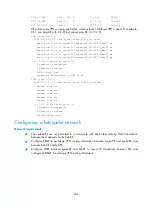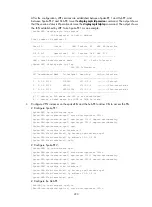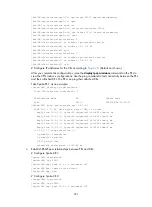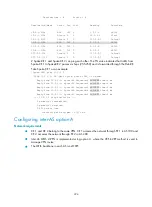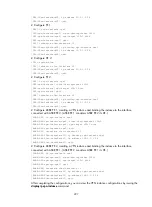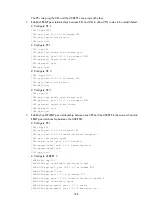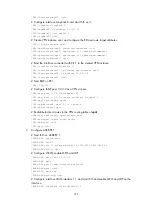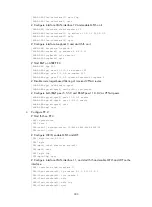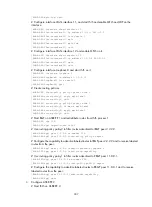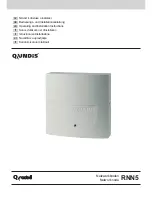
294
Destinations : 8 Routes : 8
Destination/Mask Proto Pre Cost NextHop Interface
10.0.0.0/24 BGP 255 0 2.2.2.9 NULL0
10.1.1.0/24 Direct 0 0 10.1.1.2 Vlan2
10.1.1.2/32 Direct 0 0 127.0.0.1 InLoop0
10.2.1.0/24 BGP 255 0 2.2.2.9 NULL0
10.3.1.0/24 BGP 255 0 2.2.2.9 NULL0
10.4.1.0/24 BGP 255 0 2.2.2.9 NULL0
127.0.0.0/8 Direct 0 0 127.0.0.1 InLoop0
127.0.0.1/32 Direct 0 0 127.0.0.1 InLoop0
# Spoke-CE 1 and Spoke-CE 2 can ping each other. The TTL value indicates that traffic from
Spoke-CE 1 to Spoke-CE 2 passes six hops (255-250) and is forwarded through the Hub-CE.
Take Spoke-CE 1 as an example:
[Spoke-CE1] ping 10.2.1.1
PING 10.2.1.1: 56 data bytes, press CTRL_C to break
Reply from 10.2.1.1: bytes=56 Sequence=1 ttl=250 time=3 ms
Reply from 10.2.1.1: bytes=56 Sequence=2 ttl=250 time=3 ms
Reply from 10.2.1.1: bytes=56 Sequence=3 ttl=250 time=2 ms
Reply from 10.2.1.1: bytes=56 Sequence=4 ttl=250 time=2 ms
Reply from 10.2.1.1: bytes=56 Sequence=5 ttl=250 time=2 ms
--- 10.2.1.1 ping statistics ---
5 packet(s) transmitted
5 packet(s) received
0.00% packet loss
round-trip min/avg/max = 2/2/3 ms
Configuring inter-AS option A
Network requirements
•
CE 1 and CE 2 belong to the same VPN. CE 1 accesses the network through PE 1 in AS 100 and
CE 2 accesses the network through PE 2 in AS 200.
•
Inter-AS MPLS L3VPN is implemented using option A, where the VRF-to-VRF method is used to
manage VPN routes.
•
The MPLS backbone in each AS runs OSPF.







